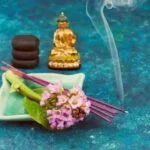
Aromatherapy oils have long been used in holistic healing practices to promote relaxation, reduce stress, and enhance overall well-being. Derived from various plant sources, these oils offer a range of therapeutic benefits that can support both physical and mental health. In this article, we will explore the origins of aromatherapy oils, their historical connection to essential oils, and how they have been used throughout different cultures.
Additionally, we will delve into the different types of aromatherapy oils available and discuss their specific properties and uses. Whether you are new to aromatherapy or looking to expand your knowledge, this comprehensive guide will provide valuable insights into the world of aromatherapy oils.
Aromatherapy oils have a rich history that dates back thousands of years. Ancient civilizations such as Egypt, China, and India recognized the power of these aromatic extracts from plants and used them for their healing properties.
From there, the practice of aromatherapy spread throughout the world and became an integral part of traditional medicine systems. Essential oils played a pivotal role in these ancient practices, being used for various purposes such as treating ailments, purifying spaces, and promoting spiritual well-being.
Today, aromatherapy continues to be widely embraced for its natural approach to health and wellness. Aromatherapy oils are distilled or extracted from different parts of plants including flowers, leaves, bark, roots, and seeds. These oils contain concentrated compounds that give them their distinctive aroma and therapeutic effects. They can be incorporated into daily routines through methods such as inhalation through diffusers or topical application through massage or baths.
The benefits of using aromatherapy oils are numerous and varied. Different oils possess unique properties that can target specific concerns or ailments. For example, lavender oil is renowned for its relaxing qualities that aid in sleep improvement and stress reduction.
Eucalyptus oil is commonly used for respiratory issues due to its decongestant properties. Peppermint oil is favored for its invigorating and cooling effects, making it useful for headaches and digestive discomfort. These are just a few examples of the diverse range of aromatherapy oils and their beneficial properties.
History of Aromatherapy and its Connection to Essential Oils.
The history of aromatherapy is rich and diverse, stretching back thousands of years. Ancient civilizations recognized and utilized the healing properties of essential oils in various ways, laying the foundation for modern aromatherapy practices. This section will delve into the fascinating historical roots of aromatherapy and its connection to essential oils.
The Ancient Origins
Aromatherapy can be traced back to ancient civilizations such as Egypt, China, and Greece. In Egypt, essential oils were highly valued for their medicinal qualities and used in embalming rituals. The Egyptians also developed sophisticated techniques for extracting oils from plants through methods like steam distillation.
In China, aromatherapy was an integral part of traditional medicine practices such as acupuncture and herbalism. The Chinese recognized the powerful therapeutic benefits of certain scents for harmonizing the body and mind.
Likewise, the Greeks made significant contributions to the development of aromatherapy. Renowned physicians like Hippocrates and Galen incorporated aromatic substances into their medical treatments, focusing on the connection between aroma and overall well-being.
Renaissance Revival
Following a decline in popularity during the Middle Ages, aromatherapy experienced a revival during the Renaissance period when advancements in science expanded understanding of plant properties. Prominent figures like Paracelsus explored distillation techniques and emphasized the importance of using essential oils therapeutically.
During this time, aromatic plant extracts gained popularity as fragrances in personal care products and perfumes-a trend that continues today-further establishing a lasting connection between aromatherapy and essential oils.
Modern Development
The term “aromatherapy” was coined by French chemist René-Maurice Gattefossé in 1937 after he accidentally discovered lavender oil’s beneficial effects on skin burns. This discovery sparked scientific interest in essential oils’ properties and led to further research on their therapeutic potential.
Since then, aromatherapy has evolved into a holistic healing practice used worldwide. It combines ancient wisdom with scientific advancements, incorporating essential oils to promote physical, mental, and emotional well-being for countless individuals seeking natural alternatives to traditional medicine.
Understanding the historical roots of aromatherapy allows us to appreciate its enduring legacy and utilize this ancient practice in our modern lives. By acknowledging the connection between aromatherapy and essential oils throughout history, we gain a deeper appreciation for the profound impact these oils can have on our overall health and wellness.
Types of Aromatherapy Oils and Their Properties.
Aromatherapy oils are derived from various plants and have distinct properties that make them suitable for different purposes in holistic healing practices. There are numerous types of aromatherapy oils, each with its own unique set of therapeutic benefits. In this section, we will explore some popular aromatherapy oils and discuss their properties and uses.
Lavender oil is one of the most widely used aromatherapy oils known for its calming and soothing properties. It promotes relaxation, reduces stress and anxiety, and helps improve sleep quality. Lavender oil can also be used topically to soothe skin irritations and relieve muscle tension.
Eucalyptus oil is famous for its refreshing and invigorating scent. It has strong antibacterial and antiviral properties, making it beneficial for respiratory issues such as congestion, coughs, and colds. Eucalyptus oil can be used in steam inhalation or added to a diffuser to clear the airways and promote easier breathing.
Peppermint oil has a cooling effect on the body and is often used for relieving headaches, migraines, and muscle pain. It can also help alleviate digestive discomforts like bloating, indigestion, and nausea. Peppermint oil can be diluted with a carrier oil and applied topically or used in a compress for localized pain relief.
These are just a few examples of the many types of aromatherapy oils available. Each oil has its own specific properties that make it beneficial for certain conditions or needs. It’s important to research and understand the individual qualities of different oils before incorporating them into your wellness routine.
| Aromatherapy Oil | Properties | Uses |
|---|---|---|
| Lavender | Calming, soothing | Relaxation, stress reduction, sleep improvement |
| Eucalyptus | Refreshing, invigorating, antibacterial, antiviral | Respiratory ailments, congestion relief |
| Peppermint | Cooling, pain-relieving | Headache relief, muscle relaxation, digestive discomfort relief |
When choosing aromatherapy oils for specific needs or desired outcomes, it’s important to consider individual preferences and any pre-existing conditions. Some oils may not be suitable for certain individuals or may interact with medications. It is always recommended to consult with a certified aromatherapist or healthcare professional before using aromatherapy oils.
They can provide personalized guidance and advice to ensure safe and effective use of the oils. Experimenting with different oils and their properties can help you find the perfect combination that resonates with your well-being goals.
How to Use Aromatherapy Oils
Diffusing
One of the most popular methods of using aromatherapy oils is through diffusion. Diffusing oils releases their fragrance into the air, creating a soothing and therapeutic atmosphere. There are several diffuser options available, including ultrasonic diffusers, nebulizing diffusers, and evaporative diffusers. Ultrasonic diffusers use water to disperse the oil particles into the air as a cool mist.
Nebulizing diffusers, on the other hand, do not require water and instead use pressurized air to break down the oil molecules. Evaporative diffusers use a fan or heat to slowly release the aroma of the oil. When selecting a diffuser, consider factors such as ease of use, noise level, and coverage area.
Inhalation
Inhalation is another common method for using aromatherapy oils. This can be done by placing a few drops of oil onto a tissue or handkerchief and inhaling deeply, or by using an inhaler tube specifically designed for essential oils.
Alternatively, you can add a few drops of oil to a bowl of hot water and inhale the steam by covering your head with a towel and leaning over the bowl. Inhalation allows for direct access to the scent molecules in the oils, which can have immediate effects on mood and mental well-being.
Massage
Aromatherapy oils are often used in massage therapy to enhance relaxation and promote physical well-being. When applying oils topically through massage, it is important to dilute them in a carrier oil such as jojoba oil or sweet almond oil before applying them directly to the skin. This helps prevent skin irritation or sensitization from concentrated essential oils.
The general rule of thumb for dilution is about 2-3% essential oil to carrier oil ratio (approximately 12-18 drops per ounce of carrier oil). Massaging the diluted oil onto the skin not only allows for absorption of the oil’s beneficial properties but also provides therapeutic touch, which can further enhance relaxation and stress reduction.
Direct Application
In some cases, certain aromatherapy oils can be used directly on the skin without dilution. However, this should only be done with caution and after conducting a patch test to ensure there are no adverse reactions.
Some oils that may be used undiluted include lavender or tea tree oil for small cuts or insect bites. Remember to check safety guidelines and consult with a certified aromatherapist before using any essential oil undiluted, as each oil has different levels of skin sensitivity.
When using aromatherapy oils through direct application methods, it is important to note that individual responses can vary. It is recommended to start with small amounts and gradually increase as needed, observing any reactions or sensitivities that may occur. Furthermore, always store oils in a cool and dark place to maintain their potency and avoid degradation over time.
Choosing the Right Aromatherapy Oils for Specific Needs.
When it comes to selecting the appropriate aromatherapy oils, it is important to consider individual needs and desired outcomes. Different essential oils have unique properties and therapeutic benefits that can address specific concerns. Whether you are looking to promote relaxation, improve sleep, boost mood, relieve headaches, or alleviate various ailments, there are specific aromatherapy oils that can help. Here are some recommendations for choosing the right aromatherapy oils for specific needs:
- Relaxation: Lavender oil is known for its calming properties and is a popular choice for promoting relaxation. Its soothing scent can help reduce anxiety and stress, making it ideal for winding down before bedtime or during moments of high tension.
- Sleep Improvement: If you struggle with insomnia or have difficulty falling asleep, consider using chamomile oil. This gentle floral oil has sedative effects that can facilitate a restful night’s sleep. Its calming aroma promotes relaxation and helps quiet the mind.
- Mood Enhancement: Citrus essential oils like bergamot and sweet orange are excellent choices for improving mood and uplifting spirits. These refreshing oils have an invigorating scent that can boost energy levels and promote a positive mindset.
| Concern | Recommended Oils |
|---|---|
| Relaxation | Lavender |
| Sleep Improvement | Chamomile |
| Mood Enhancement | Bergamot, Sweet Orange |
It is important to note that individual preferences may vary, and it may take some trial and error to find the ideal aromatherapy oil for specific needs. Additionally, it is recommended to consult with a certified aromatherapist or healthcare professional before using essential oils, especially if you have any underlying medical conditions or are pregnant.
By selecting the right aromatherapy oils based on specific needs, individuals can experience the therapeutic benefits of these natural remedies. Incorporating these oils into daily self-care routines can support overall well-being and promote a greater sense of balance and harmony in life.
DIY Aromatherapy Blends and Recipes.
Aromatherapy allows for a personalized experience by creating unique blends and recipes tailored to individual preferences and needs. DIY aromatherapy blends and recipes provide an opportunity to experiment with different combinations of aromatherapy oils and create products that can be used for various purposes, including relaxation, stress relief, and mood enhancement.
Relaxing Bath Salts
- Mix 1 cup of Epsom salt, ½ cup of sea salt, and 10 drops of lavender essential oil in a glass container.
- Add a few drops of the blend to warm bathwater and soak for at least 20 minutes.
- The calming properties of lavender help promote relaxation and relieve tension in both the mind and body.
Soothing Massage Oil
- Combine 2 tablespoons of carrier oil (such as almond or jojoba oil) with 5 drops of chamomile essential oil and 5 drops of bergamot essential oil.
- Gently massage the oil onto the skin, paying attention to areas of tension or discomfort.
- Chamomile provides a sense of calmness while bergamot uplifts mood, making this blend perfect for soothing both the body and mind.
Refreshing Room Spray
- In a small spray bottle, mix ½ cup filtered water with 10 drops of eucalyptus essential oil, 5 drops of peppermint essential oil, and 5 drops of lemon essential oil.
- Shake well before each use, then spritz the blend into any room to freshen up the space.
- This invigorating blend promotes clarity, focus, and mental stimulation.
Calming Diffuser Blend
- Add equal parts lavender, ylang ylang, and frankincense essential oils (around 5 drops each) to your diffuser.
- Allow the aroma to fill the room, creating a tranquil and peaceful atmosphere.
- This combination promotes relaxation, reduces anxiety, and encourages restful sleep.
It is important to note that when creating DIY aromatherapy blends and recipes, it is crucial to use high-quality essential oils from reputable sources. Additionally, perform a patch test on a small area of the skin before using any blend or recipe topically to ensure there are no adverse reactions.
Aromatherapy Oils for Stress Relief and Anxiety Management.
Stress and anxiety have become prevalent issues in today’s fast-paced society, affecting people of all ages. In the search for natural remedies, aromatherapy oils have gained recognition for their ability to promote relaxation and alleviate mental and emotional strain. This section will delve deeper into the calming effects of certain aromatherapy oils on stress and anxiety.
Chamomile is one of the most well-known essential oils used for stress relief. Its soothing and sedative properties make it a popular choice for promoting relaxation and easing anxiety symptoms. By inhaling chamomile oil through a diffuser or applying it topically with a carrier oil, individuals can experience a sense of tranquility and calmness.
Frankincense is another powerful essential oil known for its ability to reduce stress and anxiety. It has been used since ancient times in spiritual practices due to its grounding properties. Frankincense can be diffused or added to carrier oils for massage or inhalation purposes to calm the mind, uplift the spirits, and induce a meditative state.
Bergamot essential oil is renowned for its mood-enhancing properties. It has a citrusy yet floral scent that promotes feelings of joy and optimism while helping to relieve stress and anxiety. Bergamot can be used in various ways, including diffusion, applied topically when diluted with a carrier oil, or added to bathwater for a relaxing soak.
It is important to note that while aromatherapy oils can provide relief from stress and anxiety symptoms, they should not replace professional medical advice or treatment if necessary. Seeking guidance from a certified aromatherapist can ensure safe usage and help individuals tailor their choices based on personal needs and preferences.
Incorporating aromatherapy oils into daily self-care routines can be a beneficial practice for managing stress and anxiety effectively. Experimenting with different oils to find what works best for individual needs is key to experiencing the full benefits of aromatherapy. Whether through inhalation, topical application, or massage, these powerful oils offer a natural and holistic approach to finding inner peace and calmness in our hectic lives.
Aromatherapy Oils for Physical Well-being and Pain Management.
In addition to their relaxing and calming effects, certain aromatherapy oils are also known for their healing properties and ability to manage physical discomfort. These oils can be used as part of a holistic approach to pain management and overall physical well-being. Here are some common aromatherapy oils that can help relieve physical ailments:
- Peppermint oil: Known for its cooling and analgesic properties, peppermint oil is often used to alleviate headaches and muscle pain. Applying diluted peppermint oil topically can help reduce tension and promote relaxation in sore muscles.
- Ginger oil: Ginger has long been valued for its anti-inflammatory and analgesic properties. Ginger oil can be massaged onto the skin to provide relief from joint pain, arthritis, and muscle soreness. It is also commonly used for digestive issues such as nausea or stomachache.
- Rosemary oil: This invigorating oil has been used for centuries to ease muscle pain, improve circulation, and stimulate the mind. Massaging diluted rosemary oil onto the skin can help ease tension in the muscles, while inhalation of the aroma can provide mental clarity.
When using aromatherapy oils for physical well-being and pain management, it is important to follow safety guidelines. Always dilute essential oils with a carrier oil before applying topically, as undiluted oils may cause skin irritation. It is also advisable to do a patch test on a small area of skin before using a new oil to check for any adverse reactions.
To incorporate aromatherapy oils into your pain management routine, you can create your own blends or use pre-made products specifically designed for certain conditions. For example, combining lavender and chamomile oils can create a soothing blend that promotes relaxation and sleep – perfect for individuals experiencing chronic pain or difficulty sleeping due to discomfort.
Conclusion
In conclusion, aromatherapy oils offer a wide range of benefits and can be easily incorporated into daily self-care routines. Whether you are seeking relaxation, stress reduction, or physical well-being, there is an aromatherapy oil for every need. By understanding the history, properties, and various uses of aromatherapy oils, individuals can find a personalized approach to holistic healing.
It is important to note that while aromatherapy can provide numerous benefits, it is always recommended to seek guidance from a certified aromatherapist. Their expertise can help in selecting the right oils for specific needs and ensuring safe usage. Additionally, experimenting with different oils allows individuals to find what works best for them and their unique requirements.
Incorporating aromatherapy oils into a daily routine does not have to be complicated. Simple methods such as diffusing oils in your living space or adding a few drops to a bath can make a significant difference in promoting relaxation and overall well-being. Furthermore, using DIY blends and recipes allows individuals to customize their experience and create products tailored to their preferences.
In summary, the versatility of aromatherapy oils makes them an excellent addition to any self-care routine. By exploring their benefits and experimenting with different oils, individuals can enhance their physical and mental well-being. Aromatherapy offers a natural and holistic approach to healing that has been practiced for centuries, making it a valuable tool for achieving balance in our modern lives.
Frequently Asked Questions
Which oil is best for aromatherapy?
The best oil for aromatherapy ultimately depends on the desired effect or purpose of the treatment. There isn’t a single oil that is universally considered the “best” for all situations. Lavender essential oil, for example, is commonly used in aromatherapy due to its calming and soothing properties, making it an excellent choice for relaxation and stress relief.
Peppermint essential oil is often used to promote mental clarity and improve focus. Eucalyptus essential oil, with its strong scent, is favored for respiratory issues like congestion and colds. Therefore, it’s important to explore different oils and their specific benefits to determine which one is best suited for a particular aromatherapy session.
What essential oils are used in aromatherapy?
A wide range of essential oils are utilized in aromatherapy, each with its own unique aroma and therapeutic properties. Some commonly used essential oils include lavender, eucalyptus, peppermint, tea tree, lemon, chamomile, and rosemary. Lavender essential oil is renowned for its ability to induce relaxation and promote sleep quality. Eucalyptus essential oil is often applied during respiratory ailments due to its decongestant properties.
Peppermint essential oil can help relieve headaches and enhance concentration. Tea tree essential oil possesses antibacterial properties and can be beneficial for skin issues such as acne or fungal infections. Lemon essential oil offers a refreshing citrus scent that can invigorate the mind and uplift mood. Chamomile essential oil has a calming effect on both the body and mind, while rosemary essential oil may aid with memory retention.
What are the 7 essential oils?
While there are countless varieties of essential oils available, there isn’t a set list of only seven essential oils that represent the entirety of aromatherapy practice or principles. However, some references may mention specific “seven” oils as primary examples or foundational oils in aromatherapy due to their versatility or popularity within the field. These commonly referred to “seven essential oils” often include lavender, eucalyptus, peppermint, tea tree, lemon, chamomile, and rosemary.
Nevertheless, it’s essential to note that this list can vary depending on the context or sources of information. Aromatherapists often work with a wide array of additional oils, such as bergamot, ylang-ylang, frankincense, and many more based on their unique properties and desired effects.





